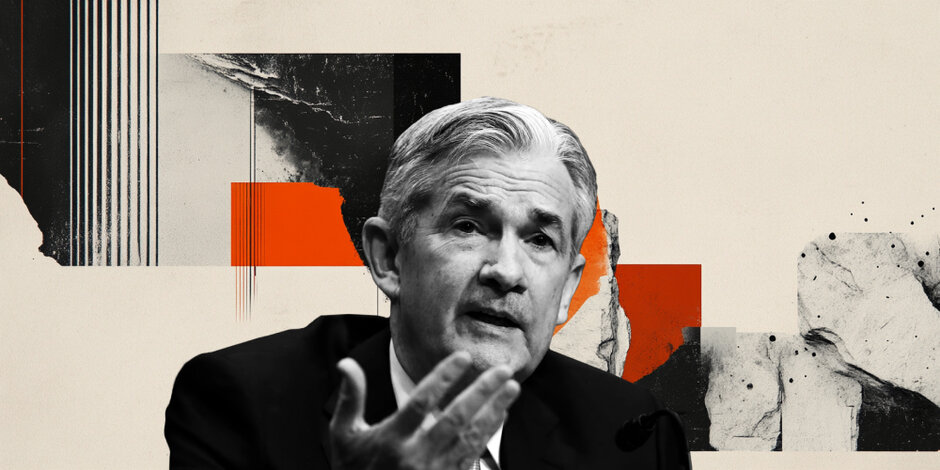US Dollar stabilizes post Jerome Powell's presser
- The US Dollar Index (DXY) holds above 108.00 after an initial rally to 108.20.
- Powell reiterates that the Fed remains data-dependent but removes inflation progress language.
- Markets adjust expectations for rate cuts, with March seen as less likely.
- US Treasury yields remain firm, offering some support to the Greenback.

The US Dollar Index, which tracks the value of the US Dollar against a basket of major currencies, remains above 108.00 following Federal Reserve Chair Jerome Powell’s remarks. While the Fed left rates unchanged at 4.25%-4.50%, Powell’s press conference played down the significance of the inflation language change, easing concerns that the central bank is shifting toward a more hawkish stance. The market reaction was mixed, with traders adjusting their rate cut expectations, now pushing the likelihood of a move beyond March. Meanwhile, US Treasury yields remain elevated, offering some underlying support to the Dollar.
Daily digest market movers: Powell’s comments temper Fed hawkishness
- The Federal Reserve held interest rates steady at 4.25%-4.50% as expected.
- Powell emphasized that monetary policy remains restrictive but removed language about inflation progress.
- Markets have scaled back expectations for a rate cut in March, now assigning lower odds to an early move.
- US Treasury yields stayed firm, with the 10-year yield hovering near 4.10%, supporting the US Dollar.
- Powell acknowledged economic resilience, noting that GDP growth in 2024 is tracking above 2%.
- The labor market remains strong, with unemployment at historically low levels and job openings steady.
- Powell avoided direct comments on trade policy but reaffirmed that the Fed will respond to economic conditions as they evolve.
- The Fed’s cautious stance leaves markets looking ahead to key economic data, including Friday’s Nonfarm Payrolls report.
DXY technical outlook: Resilience above 108.00, but caution remains
The Dollar Index remains on solid footing above 108.00, showing signs of stabilization ahead of the Fed’s policy announcement. However, momentum indicators reflect mixed signals. The Relative Strength Index (RSI) remains below 50, suggesting limited bullish strength, while the MACD’s red bars indicate ongoing selling pressure. If the DXY maintains its current position, further gains toward 108.50 are possible. A break below 107.50 would open the door for additional losses.
Fed FAQs
Monetary policy in the US is shaped by the Federal Reserve (Fed). The Fed has two mandates: to achieve price stability and foster full employment. Its primary tool to achieve these goals is by adjusting interest rates. When prices are rising too quickly and inflation is above the Fed’s 2% target, it raises interest rates, increasing borrowing costs throughout the economy. This results in a stronger US Dollar (USD) as it makes the US a more attractive place for international investors to park their money. When inflation falls below 2% or the Unemployment Rate is too high, the Fed may lower interest rates to encourage borrowing, which weighs on the Greenback.
The Federal Reserve (Fed) holds eight policy meetings a year, where the Federal Open Market Committee (FOMC) assesses economic conditions and makes monetary policy decisions. The FOMC is attended by twelve Fed officials – the seven members of the Board of Governors, the president of the Federal Reserve Bank of New York, and four of the remaining eleven regional Reserve Bank presidents, who serve one-year terms on a rotating basis.
In extreme situations, the Federal Reserve may resort to a policy named Quantitative Easing (QE). QE is the process by which the Fed substantially increases the flow of credit in a stuck financial system. It is a non-standard policy measure used during crises or when inflation is extremely low. It was the Fed’s weapon of choice during the Great Financial Crisis in 2008. It involves the Fed printing more Dollars and using them to buy high grade bonds from financial institutions. QE usually weakens the US Dollar.
Quantitative tightening (QT) is the reverse process of QE, whereby the Federal Reserve stops buying bonds from financial institutions and does not reinvest the principal from the bonds it holds maturing, to purchase new bonds. It is usually positive for the value of the US Dollar.
Author

Patricio Martín
FXStreet
Patricio is an economist from Argentina passionate about global finance and understanding the daily movements of the markets.

















